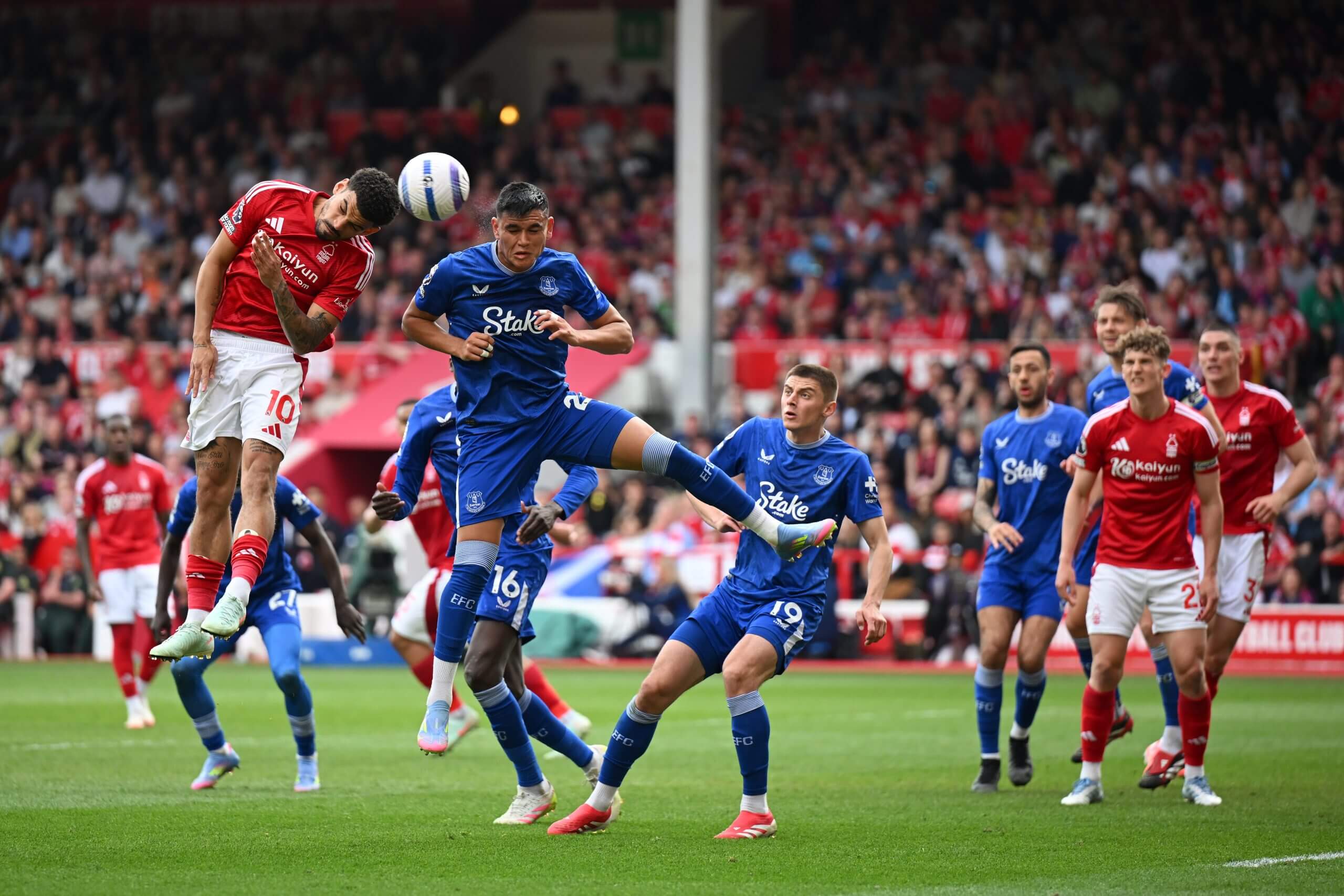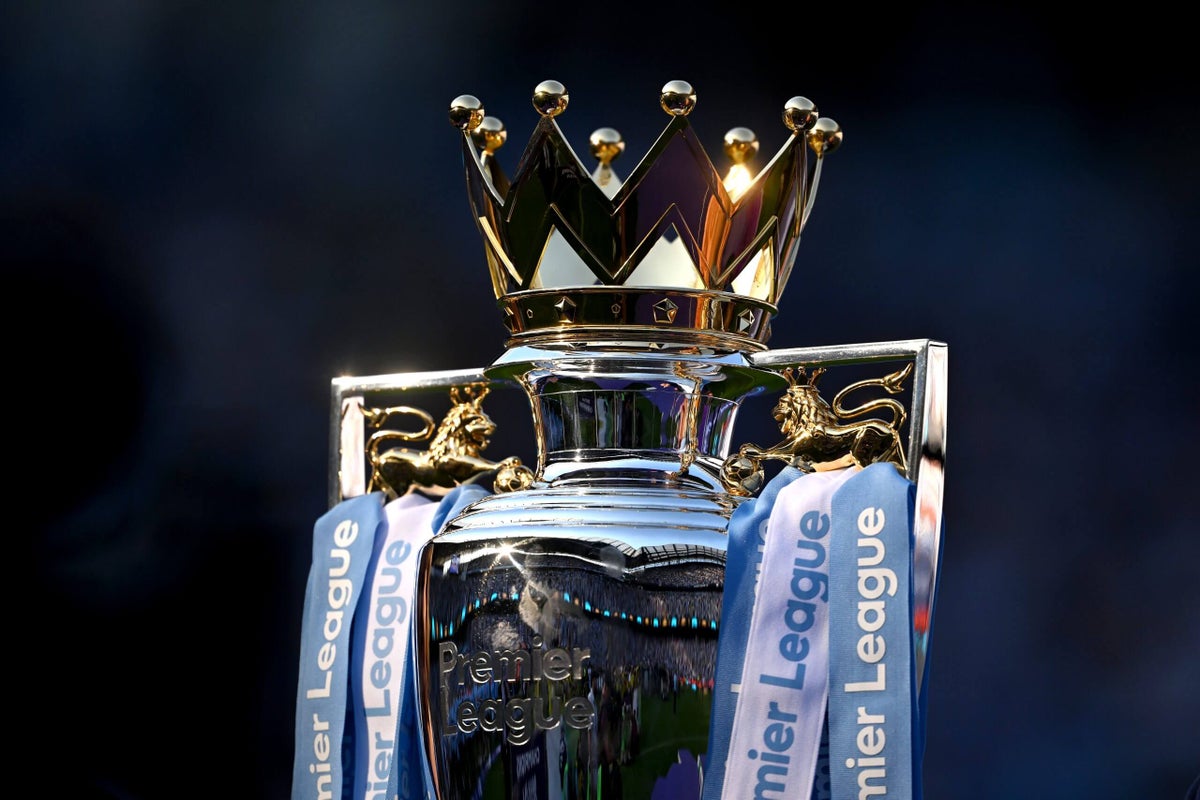Premier League clubs have voted to overhaul the league’s financial regulations from the start of the 2026-27 season.
The clubs held a shareholders’ meeting in London on Friday to discuss a range of proposed new financial measures, known as top to bottom anchoring, the squad cost ratio (SCR) and the sustainability and system resilience (SSR).
Anchoring was voted on first but received only seven votes in favour, with 12 against and one abstention. The clubs then voted on SCR, which passed 14 to six — with Bournemouth, Brighton & Hove Albion, Brentford, Crystal Palace, Fulham and Leeds voting against — and SSR, which passed unanimously. A threshold of 14 of the 20 clubs voting in favour of a proposal is required to change Premier League rules.
SCR will replace the league’s current profitability and sustainability rules (PSR), which limit club losses to a maximum of £105million ($137m) over a three-year period. This season will be the last under those regulations.
The Athletic’s BookKeeper Chris Weatherspoon explains the new rules below, including how punishments will work and which clubs are at most and least risk of being caught out.
How will SCR work?
Similarly to the current SCR regime operated by UEFA, which nine Premier League clubs needed to adhere to this season.
SCR broadly covers one year of club activity, except for player sales (see below), and Premier League SCR will be assessed across a season. UEFA, by contrast, assesses clubs on an annual January to December basis.
SCR puts a direct limit on how much clubs can spend on their players and head coach, albeit one which is linked to a given club’s revenue. In other words, the amount able to be spent under SCR will differ from club to club.
Costs assessed under SCR include player and head coach wages, agent fees and the amortisation or impairment (when a club writes down a player’s value in their books) of transfer fees. In a continuation of the old PSR regime, costs relating to women’s teams and youth academies are excluded for SCR purposes.
To allow for swift punishment — i.e. to avoid matters dragging over multiple seasons, as they have under PSR — clubs will undergo an SCR Compliance Test each March 1. If their squad cost is equal to or less than 85 per cent, they will be deemed compliant. If they exceed that level, they will be subject to an Accounts Confirmation Test at the end of the season in June.
How does this compare to UEFA’s rules?
A notable difference between the two SCR frameworks is the proportion of relevant income clubs can spend on squad costs. Under UEFA regulations, that limit sits at 70 per cent while the Premier League has agreed to an 85 per cent limit.
That won’t matter to the nine clubs already competing in Europe this season, but the extra 15 per cent allowed for the rest tallies with the Premier League’s statement, which says the new rule will “promote opportunity for all of (our) clubs to aspire to greater success, while protecting the competitive balance and compelling nature of the league”.
Clubs will only be able to spend a set proportion of relevant income under SCR, which comprises “football-related revenue” (so, generally speaking, a club’s annual turnover) plus their net profit or loss generated from player sales. Under UEFA rules, the latter is averaged over the past three seasons, meaning clubs are less easily able to extricate themselves from regulatory trouble with a quick player sale. The averaging has been reflected in the Premier League’s SCR regime.
What are red and green thresholds and the other new terms we’ll be hearing about?
That 85 per cent limit has another name, introduced in the new rules soon to inhabit the Premier League’s handbook: The ‘Green Threshold’.
At the beginning of each season, clubs and the Premier League will agree on estimated football revenues, from which their 85 per cent, Green Threshold spending limit will be derived.
A further limit (the ‘Red Threshold’) will be set at up to 30 per cent higher, so for each club in 2026-27 their Red Threshold will be 115 per cent. Clubs will be able to spend above their Green Threshold without incurring a sporting sanction, provided they do not exceed their Red Threshold. If they exceed the latter, a sporting punishment will follow.
If that sounds too simple, then don’t worry, they found a way to make it more complex.
If a club complies with their Green Threshold and returns a squad cost ratio of 85 per cent or lower, their Red Threshold will remain at 115 per cent. However, if a club exceeds the Green Threshold, they will see their Red Threshold reduced by the size of the excess. For example, if a club records a 90 per cent ratio in 2026-27, their 2027-28 Red Threshold would be 110 per cent.

Premier League chief executive Richard Masters. (Alex Livesey – Danehouse/Getty Images)
The Premier League has termed this a Feedback Loop, and it is one which updates year-on-year. Ultimately, if a club consistently goes over their Green Threshold but does not exceed their Red Threshold, the latter will move ever closer to the 85 per cent mark. On the flipside, if a club exceeds the Green Threshold in one season but is later compliant, they have scope to build their Red Threshold back up to that 115 per cent maximum. In each season they are compliant, they increase their Red Threshold by 10 per cent, up to the 30 per cent overall maximum.
As an example, say a club records a 100 per cent SCR figure in 2026-27, or 15 per cent over their Green Threshold. That reduces their 2027-28 Red Threshold to 100 per cent.
In 2027-28, they record an SCR figure below 85 per cent, meaning they are compliant. As a result, their 2028-29 Red Threshold would be 110 per cent and further compliance that season would raise it to the 115 per cent maximum for 2029-30.
In explaining why clubs will be allowed to exceed the 85 per cent limit without sporting sanction, the Premier League said it “allows for clubs to invest ahead of revenue and reasonable variance or genuine sporting underperformance throughout the season”.
In essence, clubs not in Europe have been afforded extra leeway for longer-term spending on squads, albeit up to a reducing limit. No such differing thresholds are in place under UEFA’s PSR regime.
What are the punishments?
For clubs which exceed their Green Threshold but not the Red, a fine looms, much like under UEFA’s SCR rules. As outlined above, Premier League clubs will also see their Red Threshold reduced in line with the previous season’s excess.
That fine will be calculated via choosing the lower of two figures: a club’s Green Threshold overspend per the March 1 measurement (based on projected spending), or the club’s Accounting Confirmation Test overspend (based on the end-of-season actual spending).
That figure is multiplied by the percentage overspend in excess of the 85 per cent Green Threshold. If a club’s SCR figure comes in at 90 per cent, their fine will be equal to five per cent (being 90 per cent less the 85 per cent allowed) of the monetary overspend. If that 90 per cent SCR figure translated to a club spending £10m more than they should have, their fine would be equal to five per cent of £10m, or £500,000.
If a club breaches in 2026-27, they will not be fined. The ‘levies’, as the Premier League terms them, commence from 2027-28. However, a club will still have its future Red Threshold reduced if its 2026-27 SCR figure falls between the 85 per 115 per cent band.
Of far greater consequence is if a club breaches its Red Threshold. As a reminder, that will be 115 per cent of relevant income in 2026-27 but could then vary by club in future seasons.
If a club breaches its Red Threshold, a sporting sanction will follow. Red Threshold breaches automatically generate a minimum six-point deduction, with a further point taken off for every £6.5m by which the offending club exceeds its Red Threshold.
Crucially, and in a clear departure from the PSR regime, clubs will be punished in the season of their breach. This should, in theory, reduce the complications and impact of a relegation-threatened club (or title-contending one) breaching the new rules.
Which clubs are most at risk?
Given the rules won’t come into action until next season, nobody just yet but, generally, it is clubs who spend a high proportion of revenue on their playing squads. SCR is directly tethered to a club’s turnover; if they spent the bulk of that on wages and fees, they will have a harder time complying.
Player costs have long been clubs’ biggest expense anyway, but the narrower focus of SCR means clubs will be less able to extricate themselves from regulatory trouble via non-football means.
That was most memorably done by Chelsea in recent seasons, whose internal sales of hotels, a car park and the club’s women’s team all helped them avoid Premier League sanction. That was not the case with UEFA, which found Chelsea in breach of two of its rules in 2024, as those asset sales were not allowed to be included in their UEFA calculations. Such transactions will now be excluded domestically too.
Chelsea’s ability to comply is much improved following the summer’s FIFA Club World Cup success and a return to the Champions League this season, while fellow UEFA breachers Aston Villa should benefit from having had to work towards the continent’s lower 70 per cent SCR limit.

UEFA’s SCR rules saw Chelsea and Aston Villa receive combined fines of around £14.7m (€17m) last summer for breaches in 2024. (Clive Mason/Getty Images)
The 85 per cent threshold for non-UEFA clubs gives those teams more headway, but there are a couple who flag up as immediate potential concerns, albeit based on figures from 2023-24 (the latest we have available for most clubs).
Per The Athletic’s calculations, using those admittedly outdated figures, five clubs’ estimated squad cost ratio exceeded 85 per cent in 2023-24: Villa, Nottingham Forest, Leeds United, Fulham and Bournemouth. Wolverhampton Wanderers were not far off, at a projected 81 per cent.
Bournemouth have progressed in the league and made significant player sales, which contribute to SCR spending power, since then, as have Forest (at least last season in terms of league position), while Leeds are expected to have improved revenues markedly since their last Premier League stint in 2022-23. Fulham and Wolves look in more precarious positions though, as explained, the need to comply will not come until next season.
Interesting will be the impact on promoted clubs. They have generally suffered from carrying high levels of loss up from the Championship under PSR, alongside not being afforded the full £105m loss limit Premier League mainstays enjoyed. Forest’s PSR breach came in part because they had to include over £60m of pre-tax losses incurred in the Championship in their first Premier League PSR calculation.
With SCR covering only a single season, there should, theoretically, be more scope for squad investment by the Premier League’s newest entrants. That will especially be the case if they choose to accept the financial hit of exceeding their Green Threshold in the season following promotion.
What’s the likely impact of no anchoring?
In terms of most clubs’ spending limits, nothing at all. As The Athletic detailed earlier this week, per the most recent figures, no Premier League club’s existing squad cost limit under either UEFA or domestic SCR would have exceeded the projected £600million upper limit which anchoring would have introduced.
One reason clubs were opposed to an anchored limit, or a ‘hard cap’, was because that probably would not have remained the case. As club revenues continued to grow, particularly at the top end of the sport, an anchored limit would have been more keenly felt.
The gulf between the non-broadcast revenues of the Premier League’s richest clubs and the rest far exceeds the gap between the two groups’ broadcast revenues. With anchoring tied to the broadcast income of the least-well-off, the ability of the bigger clubs to use their commercial might for squad spending would have been restrained.
In turn, in an argument which appears to have worked, opponents to anchoring feared it would leave English clubs less competitive in Europe, where clubs are only limited to the 70 per cent squad cost limit already imposed by UEFA.
That was a valid concern, but only up to a point: on 2024-25 figures, only Real Madrid and Barcelona would have had a higher squad cost limit than the £600million proposed under anchoring, and Barcelona have had plenty of their own problems with a domestic salary cap in recent years.
In any case, anchoring was roundly rejected, with 60 per cent of clubs voting against. The repercussions will not matter much in terms of most clubs’ nominal ability to spend, but it could allow those at the top to stretch even further ahead.
SCR is tied to revenues and player sales, but the latter are averaged over three seasons. In that sense, clubs looking to make up revenue gaps to those above them through player trading will need to be consistently good at the latter; only a third of sales profits will count in a given season, so one big sale will have less of an immediate impact than it did under PSR.
Clubs competing in Europe will remain tethered to UEFA’s 70 per cent limit, without the complication of a domestic anchor reducing their spending power further.
Anchoring was held up by its critics as having the potential to suppress player wages more widely. Whether it would have is unclear — the limit was far beyond what most clubs can spend anyway — but it is a moot point now. Whether the introduction of domestic SCR can help improve the finances of an overwhelmingly loss-making English pyramid, one where high salaries at the top have a knock-on effect below, will take much more time to assess.
And what about SSR?
SSR comprises three prongs. One seeks to ensure clubs have sufficient resources to handle both known outgoings and any reasonable fluctuations that may occur in revenue. The other two look at clubs’ long-term financial outlook, assessing the health of a club’s balance sheet.
“The sustainability and systemic resilience rules assess a club’s short, medium and long-term financial health through three tests — working capital test, liquidity test and positive equity test,” the league added.
All 20 clubs voted in favour of SSR, perhaps reflecting the lack of concern they have around breaching it. The requirements it will impose on clubs are varied but point toward moving them away from short-term thinking.
Those requirements, spread across the three tests mentioned above, include: clubs having to show continued monthly access to at least £12.5million in cash or working capital; clubs demonstrating their ability to withstand a ‘Stress Test’, whereby they suffer a theoretical £85m financial hit, ostensibly to mirror the potential impact of relegation; and clubs need to show assets outweigh liabilities though, crucially, they’ll be allowed to include player valuations at market value rather than book value.
So, is this the end of PSR?
Yes, or at least it is domestically in the top tier. Clubs will continue to be assessed on three years’ worth of overall financials up to the end of this season but, once they are confirmed as clear of any breaches of loss limits under the existing rules, PSR will cease to be a consideration with the Premier League.
That is important given events of recent years, where clubs have used the sale of non-football assets to boost their bottom lines. PSR assessed a club’s overall profitability, meaning high spending on players could be offset elsewhere — even if some of the methods used for the latter were met with incredulity by onlookers.
The movement away from PSR means such asset sales will no longer help clubs out of a regulatory jam, as they do not comprise revenue (neither in an accounting sense nor in how both UEFA and the Premier League have laid out their SCR rules).

Nottingham Forest and Everton were previously sanctioned by the Premier League for breaching PSR. (Michael Regan/Getty Images)
Ditching PSR means clubs will no longer be assessed on overall loss-making, a fact which would not seem to do much for those with concerns football clubs lose too much money as it is. Much of that loss though, is driven by spending on players and their wages — which SCR directly focuses upon.
More closely tethering player spend to a club’s recurring revenues should, in theory, help with sustainability, though only if the limits imposed under SCR are low enough to leave clubs plenty of money for their other bills.
At a glance, that might not be the case. In 2023-24, general running costs comprised 24 per cent of Premier League revenues which, combined with an 85 per cent limit on squad spending, would still see clubs spending more than they earn.
The end of domestic PSR does not mean clubs will be entirely free of concern surrounding overall losses. UEFA’s current regulations include a Football Earnings rule, which limits club losses across a rolling three-year period — much as the Premier League’s PSR regime does now. English clubs competing in Europe will remain subject to that.
There is also the question of how the EFL and its clubs will react to the rule changes. England’s second tier, the Championship, still operates a PSR regime which limits club losses over three seasons. If that remains in place, clubs relegated from the Premier League will need to adhere to it.

